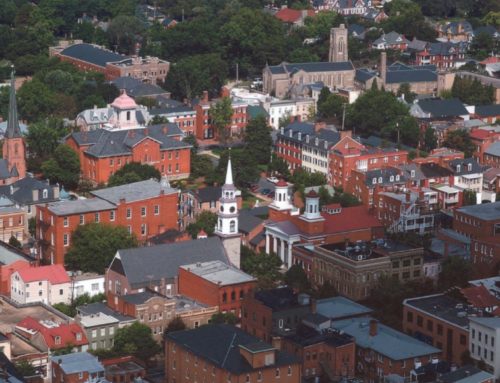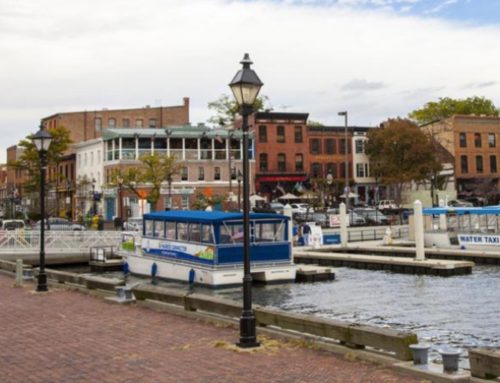Excerpt from the Capital Gazette:
The controversy over the mural splashed across Tsunami restaurant has come to a swift close.
The Historic Preservation Commission on Tuesday night voted to approve the painting on the restaurant, owned in part by Democratic mayoral candidate Gavin Buckley.
The commission voted quickly and unanimously. The choice to retroactively accept the mural, originally unveiled in 2015, followed a years-long dispute over the building’s facade. The West Street building falls within Annapolis’s Historic District, but the mural was commissioned without approval from the HPC, which safeguards the city’s historic character.
The commission previously argued it has jurisdiction over alterations of historic facades. Buckley has said the mural, a giant mashup of a golden Buddha and the screaming nurse from 1925 film “Battleship Potemkin,” did not fall under the commission’s purview. District court Judge John P. McKenna Jr. ruled in the city’s favor in May and, in his opinion, determined the city’s laws met content-neutrality requirements that allow a government to restrict circumstances of certain speech, but not the content of the speech itself.
Buckley originally filed suit against the city rather than applying for a retroactive certificate of approval to prove a point, he said.
“We just want the city to think about some other apparatus or some other way that doesn’t make the HPC in charge of artistic content,” Buckley said in an interview before the meeting.
He thanked the commission for ultimately approving the mural, and said the dispute was “a conversation the city needed to have.”
“Preservationist and artists have much more in common than sets them apart,” he said.
Commission Chairwoman Sharon Kennedy had no comment on the end of the Tsunami process.
The commission also approved a continuance for a city plan submitted by Douglass Bobb with EBA Engineering, Inc. to rebrick Main Street to fix rutted and separating pavers. The commission will consider the plan again at an administrative meeting on Sept. 28 after the city presents brick, caulk and concrete finish samples. The commission will also review an archaeological report and identify sensitive archaeological sites that might be disturbed during the construction.
With the commission’s approval, the project will move forward this January, said public works director David Jarrell, after a bidding process. The project will cost a total of $3.1 million, Jarrell said. The Main Street rebricking will be completed in three sections — between Church Circle and Conduit Street, between Conduit Street and Francis Street and between Francis Street and Memorial Circle — and include water line installation for businesses without sprinkler systems.
“I think we can do about 20 of those a month,” Jarrell said. “We would just be working on [an area the size of] one parking spot, so it won’t be massive disruption to the street.”
The city would install the water lines from January and March.
Rebricking of the top section between Church Circle and Conduit Street would begin on the right lane to allow left lane traffic to flow through. Under the plan, the city would remove current brick pavers, the underlying asphalt and a subbase, Jarrell said, and lay new subbase and asphalt. Construction would then switch to the left lane. The city would lay asphalt on the top section by May and on the bottom section, between Francis Street and Memorial Circle, during June and July using an identical process.
The city would in August begin reconstruction on the middle section, between Conduit Street and Francis Street, while simultaneously laying bricks on the top section. Both sections will be closed. The city would finish reconstruction and rebricking on the bottom and middle sections in September. The project would be completed in October, in time for the United States Sailboat Show.
The project, if completed, will not affect sidewalks, Jarrell said, though parking will be redirected in construction areas. The city is considering running the circulator more often to ease constraints on parking and allow access to Main Street businesses from city garages, Jarrell said. There is also discussion of hosting festival-like activities on closed sections of the street to drive foot traffic and attract visitors to Main Street during the reconstruction, Jarrell said.


